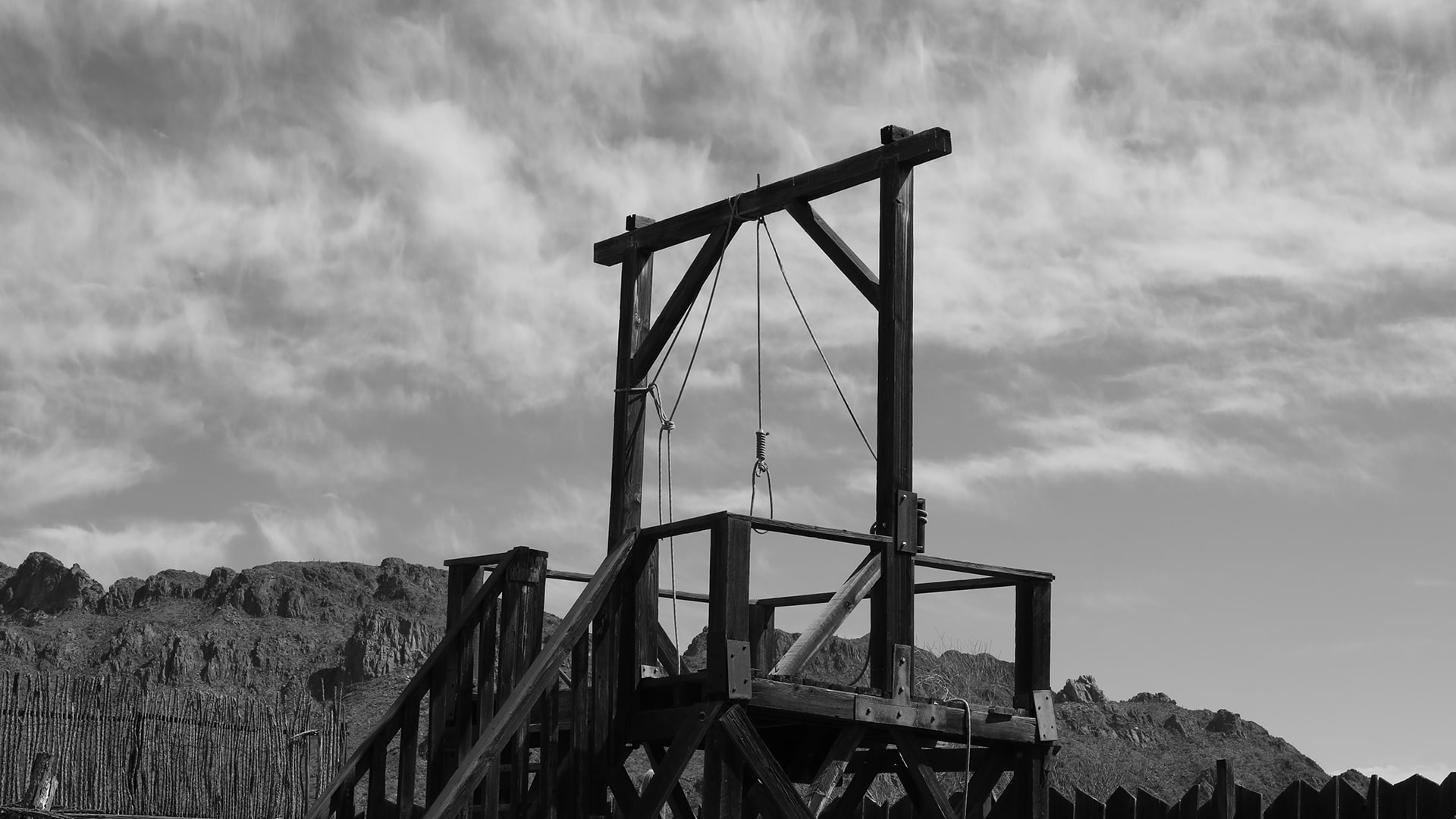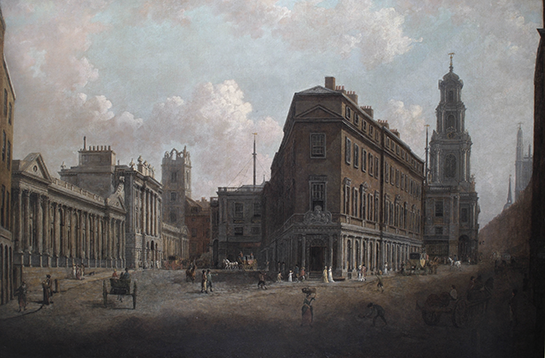Various University Discussion Forums Regarding – A History of Crime and Punishment
Discussion 1
- What do you consider to be the most interesting aspect of the way the law developed and operated in the Anglo-Saxon period?
- What factors seem to have prompted the writing down of laws in the Anglo-Saxon period?
- What do the laws reveal about Anglo-Saxon society?
600 AD British law experienced the development of Ethelbert’s 90 clauses of ‘dooms. Prior to the dooms criminal matters were dealt with between families and communities known as feudal law. As social structures developed and Ethelbert’s absolutism was established, law became a public matter, sometimes a matter of court, resulting in a judicial process instead of familial. Although more legislation was contributed to British society through Ethelbert’s dooms, practices such as trial by hot iron were used to prove innocents through God’s will, the accused would hold a hot iron and if their wounds healed, they were innocent and if they infected, they were guilty (Warren, 1985), punishments such as these demonstrate secularism in law.
The Kent social structure also proved prejudice towards serfs and freemen in their social structure. Law regarding the four-tiered social structure which included Monarchs, Nobles, Freemen and Serfs, established a system which benefited landowners. Ethelbert’s dooms were influenced by Roman law, Germanic people used the term “juxta exempla Romanorum” (Warren, 195, pg.8) which translates to “after the manner of Rome” demonstrating Christianized secular laws. These factors are examples of how interesting the development of law from feudal to Ethelbert’s 90 clauses of dooms and the Roman influence.
Multiple factors resulted in the writing of laws in Anglo-Saxon Britain. The core factors were Christianization, Centrolization of Power, and the Legal complexities of familial feudal matters. The Roman civilization were a Christian society and they migrated to England in 43 AD. Germanic tribes such as the Saxons, Goths, Franks, and others migrated into Britain in the fifth century and the Roman influence resulted in Christianization and secular law. The result of Christianization was the centralization of power, Ethelbert’s kingdom of Kent resulted in separate courts managing judicial matters instead of feuds. The four-tiered society resulted in law under the authority of God, and secular monarchism. The feudal system and centralization of powers resulted in legal complexities within communities being managed by separate courts. These factors all resulted in the solidification of Ethelbert’s dooms and the writing of these legal matters, to solidify England’s first laws.
Ethelbert’s dooms in seventh century England are a demonstration of the evolution of law. Warren argues that “feud is anti-law, for it is the familial rather than the political means of maintaining order” (Warren, 1985, pg.8). The development of Ethelbert’s dooms was a demonstration of the first judiciary means of law and although secularism in law resulted in trials such as by hot iron, it was a step towards modern day law.
Discussion 2
- What was the importance of Forest Law in Norman times?
- What does the crime of poaching tell us about Norman perceptions of criminal activity?
13th and 14th century Norman England had Forest Laws designated substantial portions of land to protection and hunting under the king’s protection. Individuals who would illegally hunt in these lands were ‘poachers.” Poachers when caught would be fined by knights who enforced these laws, imprisoned, mutilated, and sometimes executed. These fines resulted in revenue generation for the crown, and allowed the king to develop social control over his servants and created his symbol of authority.
Fines were dependant on the wealth of the individual, clergy caught poaching would pay a fine much larger than a peasant, if a peasant could not afford the fine, would be imprisoned until payment was made. The penalty reimbursed to the crown, this resulted in a vast revenue stream. The number of poachers is also available and as Birrell states there were over 980 recorded poachers caught within the 13th century amongst the Cannock, Kinver, Dean and Rockingham states (Birrell, 1982, p.10).
Although I have only mentioned poaching, the Forest laws also involved the protection timber alongside game protection. Forest guards also took bribes instead of paying fines to the king, the law itself was completely flawed on all levels, and a mockery of an implemented law. It was flawed due to the inability to control all land, and the knights which would take a bribe instead of a fine. Ralph Basset is a lord who challenged forest laws and his villages poachers were “not apprehended because of protection” (Birrell, 1982, p.15), displaying both disregard for the law but also a rebellion to the king’s law and a violation of Royal authority.
As a feudal society, having a four-tiered structure including the king, lords, knights and peasants in descending order, the criminal system demonstrates this social structure. Due to this very monarchical primitive system, poaching was a direct challenge to the kings’ requests and therefore a challenge to the medieval feudal system. Although poaching led to various payments of fines directly to the crown, dependent on the wealth of the poacher, the king used his hunting privileges to sell game, so poaching meddled with one source of income. As we can see, the importance of the Forest laws was multifaceted, it involved all classes of the feudal system for varying reasons as it functioned as a wealth revenue, protection of the ecosystem, hunting game, poverty, lack of food and its involvement of social control. Poaching criminal activity is a depiction of medieval English monarchism, feudalism and how social control resulted in criminal activity and a slight to royal authority.
Discussion 3
- In what ways can trial by ordeal be seen as expressing community values?
- Why did the English adopt trial by jury after the ordeal was abolished?
- To what extent was there opposition to trial by jury in the medieval period?
Trial by ordeal expressed community values through divine judgement, community participation, restoration of peace and the reinforcement of laws and values. Trial by jury allowed the crown to “administer justice all over the country” (Hostettler, 2004, p.22). Trial by ordeal was a judicial practice involving gods divine judgement to acquit the accused as innocent or guilty depending on the outcome of the ordeal, ordeals included boiling water, consisting of the accused placing their hand in a boiling cauldron, if the accused’s hands were to infect, they were guilty and if they didn’t become infected, they were innocent, demonstrating divine judgment. This resulted in community participation as they engaged in the ordeal, this involvement resulted in restoration of peace amongst communities and due to the barbaric nature of the trials, it reinforced and expressed the laws and values of the community.
Trial by ordeal was abolished in 1219 AD Norman England. The development of the Trial by Jury can be attributed to royal authority, development of the legal system and simply the unfair nature of the Trial by Ordeal. As the Norman centralization of power developed during this period, it was no longer up to God alone to prove the accused guilty or innocent, this allowed the king to control his realm and administer his own justice. As a progression in the legal system, trial by ordeal developed over a period initially civil issues, and then criminal issues, the system itself had flaws during this period due to hearsay, unfair trials, and biased jury. So, although the trial by jury was an excellent progression in the English legal system, it was not perfect.
There was opposition to trial by jury as the elite no longer had special exemptions, the traditional practice of trial by ordeal was no longer present and resistance to the trial by juries practice of royal authority and the no longer present communal trials. The clergy prior to the implementation of the trial by jury were immune to judicial practices, so as the trial by jury sought to potentially harm them, they met with resistance. Like this the communal practices of trial by ordeal and the feudal familial practices developed as a traditional practice, so ceasing this method of justice where the community was involved harmed tradition. The trial by jury was also met with resistance due to the overwhelming difference, the trial by jury included twelve layman who would determine the guilt or innocence (Hostettler, 2004, p.22). The resistance due to these two factors resulted in challenges to royal authority and a general dislike of this evolved judicial system which would develop into our legal system today.
Discussion 4
- How did women experience witch trials in England during the 16th and 17th centuries?
- How and to what extent was a moral panic about witches constructed during the peak of the witch craze between 1645 and 1647?
Women were disproportionately accused of witchcraft during the witch craze of the mid-16th century. Divine judgement was a process witches experienced, accused of having sexual relations with the devil. Accused witches hung or burnt at stake, and over a 200-year period there were over 90,000 accusations, leading to 45,000 executions (Sharpe, 1994).
The legal process during witch trials was deeply flawed, the defendant occasionally tortured prior to their execution to extract information. These legal battles were often one-sided with barely any legal representation for the defendant. Another group of people who were perceived as witches quite frequently were Jews, Gypsies, and Catholics, who were used as scapegoats (Gaskill, 2009, p.82) as social upheaval became more prevalent.
The social structure was deeply patriarchal, most accused witches were women who challenged this social structure. As women challenged the patriarchy this led to many witch trials, hunts, and accusations, to challenge the patriarchy is to challenge the monarch. The executions were often public spectacles, to maintain social control amongst an extraordinarily complex period of English history. As a religious society, the clash between Catholicism and Christianity in the English civil war of 1642 – 1651 which developed extensive religious tension.
As stated by Malcolm Gaskill, “regarding emotion about witchcraft, it is panic” (Gaskill, 2009, p.78). The history of witch hunting dates to 1441 under the reign of King Henry XIII. Political, religious, social, and legal strain were present in England, Gaskill states “the spread of fear and it’s political expression are interlinked” (Gaskill, 2009, p.82).
During the seventeenth century, England experienced a civil war between Christians and Catholics, this led to religious tension and a social upheaval resulting in an increase of social conflict. Witches were believed influenced by the devil, selling their soul, this included cursing individuals, killing livestock, resulting in a religious battle with witches and consequently the devil himself.
Due to the English civil war of 1645-1647, religious and social conflict resulted in accusations of the witch, who traded their soul to the devil. Social upheaval, religious tension, poor agriculture, sexism, and a poor legal system were the factors which influenced the witch craze at its worst in the mid-17th century yet would continue from Henry VIII of the 15th century well into 18th century England and its abolition.
Discussion 5
- What does Shoemaker’s article tell us about the ways Londoners perceived and experienced crime in the 18th century?
- How did Londoners form their perceptions of crime?
- In what ways did emotions form a part of 18th-century criminal trials?
Shoemaker’s article shares that the moral panic of the 17th and 18th centuries were due to social and political instability and crucially “central to the model of the moral panic is the role of the media” (Shoemaker, 2017, p.72), contributing to public discourse. Print media during this period were oversharing crime from small petty crimes to heavy crimes, this instilled a sense of danger to the public, and this was distorted. Historians have studied various diaries and have understood that there were few personal accounts of crime in comparison to the crime portrayed. As stated by Shoemaker, “print supplemented by oral reports played a more powerful role in shaping attitudes towards crime than personal experience” (Shoemaker, 2017, p.94) demonstrating the ill-informed hysteria of the moral panic. Shoemaker demonstrates the complex dynamics of a poor legal system and social inequalities, resulting in these factors instilling fear and perception of the moral panic which was famous in the 18th century England.
Londoners formed their perception of fear and crime through multiple different methods. Throughout the late 17th and 18th century literacy rates increased alongside a vast improvement in media production and print news prices decreasing, allowing a substantial portion of English society to consume news. Although the literacy rates and the improvements in print media allowed the public to consume more media, it also allowed media companies such as the Morning Post, the Morning Herald, and The Times to instil the moral panic of the 17th and 18th centuries. Print also expressed public discourse and the inadequate social system of 18th century Britain, and as print news grew it “shaped the publics sense of crime as a growing social problem” (Shoemaker, 2017, p.72). This allows us to see a direct connection between print media and social discourse, creating the 18th century moral panic hysteria.
The judicial system of the 18th century was incredibly flawed as the judge would often include emotion to impact a hearing. During this period, it was also incredibly common for the accused to not be represented by a lawyer, and it was not until the “1820’s when it was common for lawyers to represent both parties” (Milka & Lemmings, 2017, p.163). 18th century criminal trials reflected the inadequacy of the justice system, demonstrating broad cultural attitudes towards crime and the growing emotional perception of the moral panic. As labelled a “moral panic,” the period itself was heavily influenced by emotion and the judicial system was the same, resulting in the judge often swaying the outcome of the legal battles and in relation media using emotion to dictating public perception of crime.
References
Milka, A., & Lemmings, D. (2017). Narratives of Feeling and Majesty: Mediated Emotions in the Eighteenth-Century Criminal Courtroom. The Journal of Legal History, 38(2), 155–178. https://doi-org.libraryproxy.griffith.edu.au/10.1080/01440365.2017.1336891
Shoemaker, R. (2017). Worrying About Crime: Experience, Moral Panics and Public Opinion in London, 1660–1800. Past & Present. Volume 234, Issue 1, 71-100, https://doi-org.libraryproxy.griffith.edu.au/10.1093/pastj/gtw046
Sharpe, J (1994). Women, witchcraft, and the legal process. Available at: https://www.taylorfrancis.com/chapters/edit/10.4324/9780203993675-11/women-witchcraft-legal-process-jim-sharpe
Gaskill, M (2009). Fear made flesh: The English witch-panic of 1645-47. In Moral Panics, the media and the law in early modern England. Available at: https://content.talisaspire.com/griffith/bundles/65f790e73d2088002b06f484
Hostettler, J 2004, Criminal Jury Old and New: Jury Power from Early Times to the Present Day, Waterside Press, Hook. Available from: ProQuest eBook Central. [26 March 2024].
Birrell, J, (1982) ‘Who poached the King’s deer? A study in thirteenth century crime,’ in Midland History, 7(1)9-25 Available at: https://content.talisaspire.com/griffith/bundles/65ee9f33adb18e000a2dfc04
Warren Winfred Lehman (1985) The first English law, The Journal of Legal History, 6:1, 1-32, DOI: 10.1080/01440368508530822



